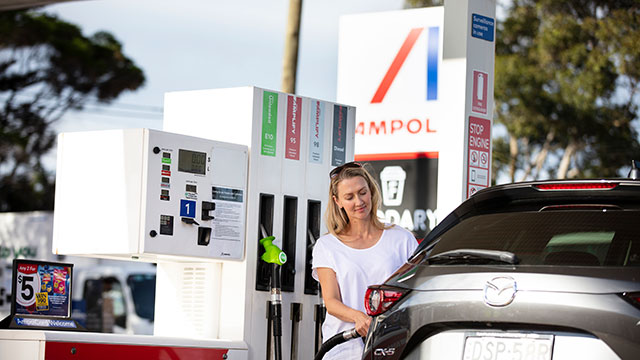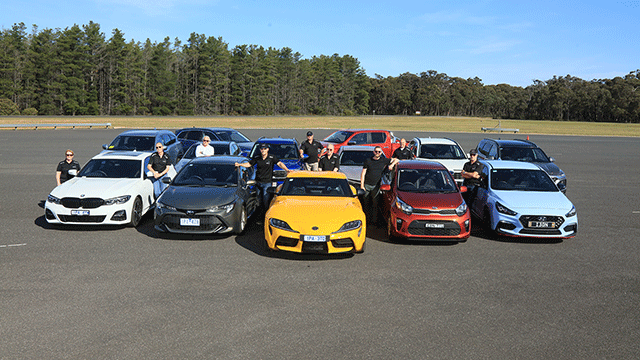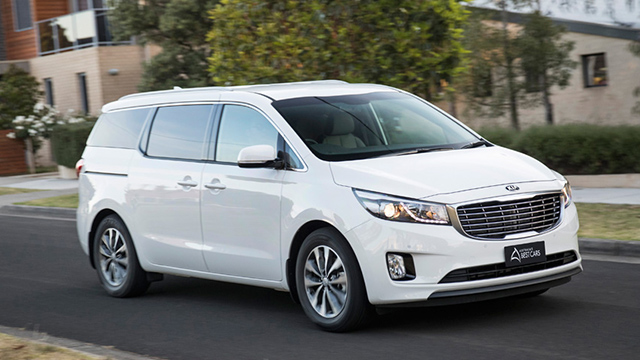Best family wagon
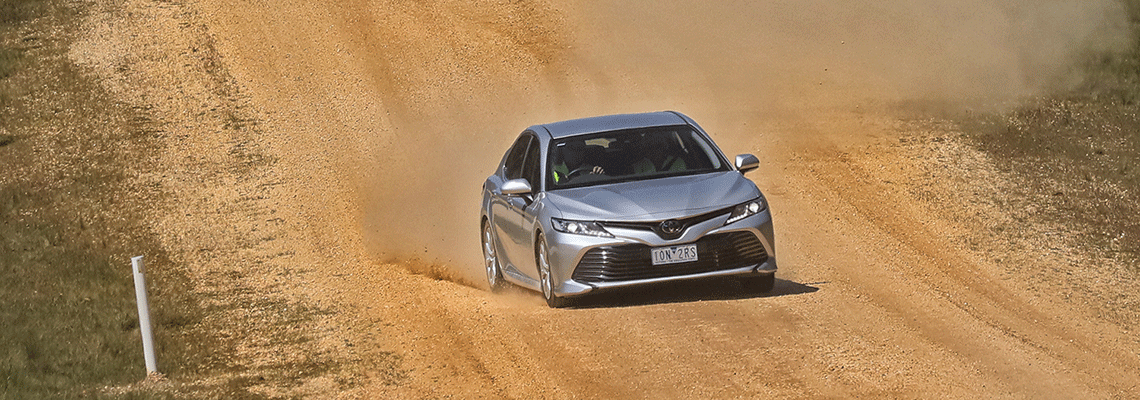
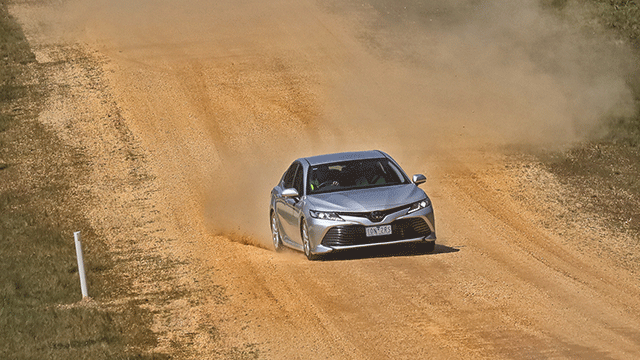
Toyota Camry Ascent Sport Hybrid
For the second year running, a petrol/electric hybrid has taken out the title of Australia’s Best Medium Car. In 2018, the win went to Toyota’s Camry Ascent Hybrid. In 2019, its slightly dearer and higher specification sibling, the Ascent Sport Hybrid, scores the trophy.
The category price point was raised this year from $50,000 to $65,000, ensuring a host of strong competition. As well as the usual suspects from Mazda, Kia, Subaru, Ford, Hyundai, Honda, Peugeot and Infiniti, the field was boosted by vehicles from the now phased-out Large Cars Under $70K category, such as the V6 Holden Commodore Calais. In all, some 15 vehicles vied for victory.
The Camry won on its strengths across all three fields of value for money, design and function, and on the road. With a score of 800 points, it finished 18 points in front of the Mazda6 Touring, with Peugeot’s stylish new 508 GT a further 40 points behind.
Judges awarded the Ascent Sport Hybrid category-leading scores for smoothness and quietness, as well as environment and perfect 10s for running and repair costs and fuel consumption. In addition, it finished equal category-leading in insurance cost, safety and ride quality, and scored highly in most other areas.
Much of the Camry’s convincing is down to a superior, all-round package that came to market in the form of its eighth generation in late 2017. This was the first sedan to adopt Toyota’s New Global Architecture (TNGA), which the company said transformed the way its vehicles were designed, engineered and packaged. According to Toyota, TNGA “enables greater freedom in design, resulting in a more athletic profile with a lower roof and bonnet, a better driving position and improved dynamics due to its lower centre of gravity and greater torsional rigidity”. As an example, TNGA packaging allowed the nickel-metal hybrid battery to be moved from the boot area to under the rear seat, improving cargo space and positioning weight lower in the car to assist vehicle dynamics.
At the Camry Hybrid’s core is a new 2.5-litre four-cylinder Dynamic Force Engine, which offers 11 per cent more power and four per cent better torque, with thermal efficiency amongst the best in the world. The new hybrid system delivers fuel economy as low as 4.2L/100km, a figure that Toyota said was better than the second-generation Prius hybrid sold in Australia until mid-2009.
Combined with the boost in engine performance and efficiency, a host of changes to the MacPherson strut front suspension and new rear suspension – aimed at improving handling dynamics and ride quality – brings an element of unprecedented driving engagement, which the judges noted. Even the CVT has six quick-shifting ratios for manual-like gear changes, while a new Sport drive mode has been added to the previous ECO and Normal modes, delivering improved acceleration response relative to pedal input.
The latest safety tech is standard across the range, including a pre-collision safety system, autonomous emergency braking and lane departure alert with steering assist. All Camry models are equipped with seven airbags.
The Ascent Sport Hybrid, distinguished by its sports bumper and side skirts, features an eight-inch display screen, satellite navigation, a seven-inch multi-information display, clearance sonars, power driver’s seat adjustment, dual-zone air, and keyless entry and ignition. While performance, equipment and safety are up, pricing is down with the Ascent Sport Hybrid some $1200 (manufacturer’s list price) less than the previous generation equivalent model.
The runners-up are also attractive propositions. The Mazda6 Touring and Peugeot 508 GT each scored a perfect 10 for safety and finished equal category-leading for handling and braking. The former was judged the category leader in ergonomics, while the latter topped the scores for seating comfort and build and finish quality.
At almost $8000 cheaper than the winning Carnival, the Honda Odyssey makes a compelling play for outright honours. A long standard features list for the top-spec VTi-L and a better-than-most five-year warranty add to the value-for-money equation and should have it on your shopping list.
The VTi-L seat configuration has the driver and front passenger catered for by multi-adjustable leather-clad heated seats with foldable armrests, while in the second row are two fantastic ‘captain’s chairs’ (let’s call them lounge chairs) that recline and extend with a unique Ottoman leg rest and armrests. This row can be adjusted, moving the seats outwards and backwards for that ultimate luxury experience. The downside is there are just two of them, while the third row is designed to seat three but our testing found it very tight for three average-sized adults. Children would survive without too much discomfort, but growing pains will surface as they advance into their mid-teens. While the overall design allows for seven occupants, a reality check says six would be the comfort limit. Luggage space behind the third row doesn’t match the Carnival, but there’s still reasonable space available.
Try as hard as it might, the Odyssey’s 2.4-litre petrol engine coupled to a CVT was no match for the Carnival. At highway cruising speeds there was little that separated the pair, but a load of occupants and an average country road incline sees the elasticity of the CVT become apparent and the tacho head north. It produces a significant amount of engine noise intruding into the cabin and not a lot of forward motion, whereas the meaty diesel in the Carnival selected a lower gear and surfed the torque available from 1750rpm while hardly raising a sweat.
The Odyssey takes care of safety with multiple advanced features including forward collision warning, autonomous emergency braking, lane keep assist, adaptive cruise control, rear cross traffic alert, multi-view camera and blind-spot alert. Similar to the Carnival, there are six airbags with the curtain airbag covering all three rows. The Odyssey features an auto parking system to take the stress out of those reverse parks, tri-zone climate control and both sliding doors are one-touch electrically operated. Navigation is standard and all the usual connectivity to your smartphone is available. There are two USB outlets and an HDMI input that allows you to play movies on the front screen when the vehicle is stationary.
With plenty to offer and a significant price advantage over the Carnival, the Odyssey’s noticeably smaller dimensions amount to a tight fit for seven passengers – albeit those in the second row who’re treated like they’re in business class.
Honda Odyssey
Indicative drive-away: $51,967
Body type: five-door wagon
Fuel economy/fuel type: 7.8L/100km, diesel
Engine/transmission: 2.4-litre four-cylinder, CVT
ANCAP: 5 stars
The Kia Sorento delivers both benefits and compromises in blurring the lines between SUVs and family wagons. What you can’t dispute is the $12,500 price advantage over the Carnival, which might dull the compromises the Sorento creates as a family wagon. Besides your initial saving on the purchase price, insurance will be less, servicing and repair will be similar to the Carnival, but the hip pocket will take a hit on fuel consumption for the 3.5-litre V6 petrol engine. The official combined consumption figure is 10L/100km and you can expect slightly worse if you spend plenty of time in the city and burbs.
The Sorento picks up Kia’s seven-year/unlimited kilometre warranty but falls behind its rivals in design and function. Yes, it gets plenty of bells and whistles, even in the lower spec Si variant; however, its ability to carry seven passengers with any level of comfort for an extended period of time isn’t to the same standard as the Carnival or even the Odyssey. It’s designed more for taking a couple of extra kids home after Saturday sport, rather than being a long-distance family hauler. That said, as a seven seat SUV, the Sorento does it better than almost anyone else. The internal packaging provides a surprising amount of space – you don’t need to be a contortionist to enter the third row and you can still get a few groceries in the back with all three rows in action. The third-row seats pack away nicely into the floor, revealing considerable cargo space. Drop the second row and you get a large flat area for carrying that new flat-screen TV home with ease.
The Sorento gets a five-star ANCAP rating and recently received a safety upgrade with autonomous emergency braking, active cruise control and lane-keep assist now standard. While it also gets six airbags, the side curtain airbag doesn’t cover all three rows. Infotainment is similar to the Carnival, although the Si Sorento misses out on the premium JBL sound system fitted to the Carnival. The first two rows get a USB port each, but the third row misses out. All rows get ventilation outlets, with the third row having a fan control, and the front and outer second row seats also have seat heaters.
Kia’s 206kW 3.5-litre V6 petrol engine is a smooth unit. In some instances, it feels too powerful as it can induce torque-steer if too much acceleration is used from a standstill. Coupled to Kia’s latest eight-speed auto, you almost don’t notice the gear changes and the Australian-based suspension engineering team has worked their magic to provide a comfortable, if not dynamic, drive. It should be remembered that this variant is 2WD only, so despite being categorised as an SUV it has no off-road ability.
Kia Sorento Si
Indicative drive-away: $47,161
Body type: five-door wagon
Fuel economy/fuel type: 10L/100km, ULP
Engine/transmission: 3.5-litre V6, eight-speed automatic
ANCAP: 5 stars
Members save with NRMA car loans
You could save an additional 1%* on our competitive car loan rates







